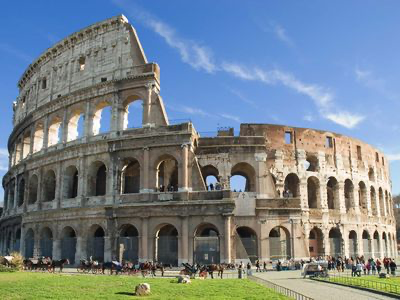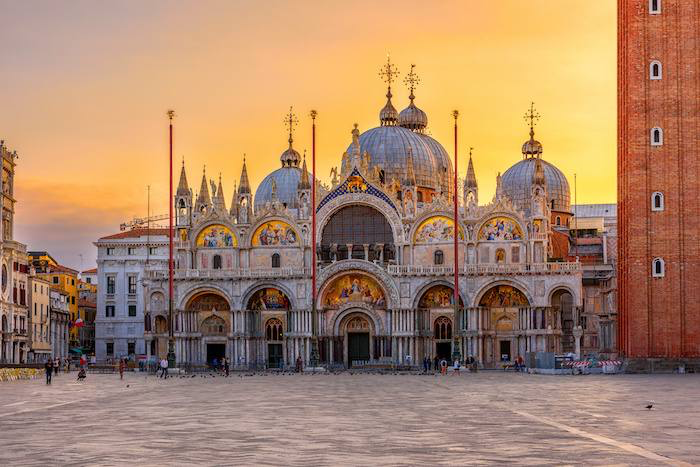Home / Visa Services / Schengen States

The Schengen Area consists of 29 European countries that have abolished internal border controls, allowing seamless travel across much of Europe. From historic cities to breathtaking landscapes, the region offers an unparalleled experience for visitors seeking culture, adventure, and world-class hospitality.

The Eiffel Tower is a wrought-iron lattice tower located on the Champ de Mars in Paris, France. It was designed and built by the engineer Gustave Eiffel and his company between 1887 and 1889 as the centerpiece for the 1889 World's Fair (Exposition Universelle), held to celebrate the centennial of the French Revolution. Standing about 300 meters (984 feet) tall, it was the tallest man-made structure in the world at the time of its completion. Despite initial criticism, the Eiffel Tower has become an iconic symbol of Paris and France, renowned globally for its unique design and cultural significance, attracting millions of visitors each year.

The Louvre Museum, located in Paris, France, is a timeless testament to the grandeur of human creativity and an unparalleled repository of cultural treasures. Spanning over eight centuries, the Louvre has evolved from a medieval fortress to a majestic palace, finally transforming into one of the world's most renowned museums. Boasting an extensive collection that spans multiple continents and artistic periods, the Louvre continues to captivate millions of visitors each year, leaving them in awe of the diverse and rich cultural heritage it preserves.

Notre-Dame Cathedral, located in the heart of Paris, is a masterpiece of Gothic architecture and a symbol of French cultural heritage. Construction began in 1163 under Bishop Maurice de Sully and continued for nearly two centuries, blending innovative architectural elements such as flying buttresses, pointed arches, and ribbed vaults. The cathedral features impressive twin towers, magnificent rose windows, and intricately sculpted portals. It has been a significant religious and historical site, hosting events like Napoleon Bonaparte's coronation.

The Sagrada Família is an iconic Roman Catholic basilica in Barcelona, Spain, designed by Antoni Gaudí. Construction began in 1882 and continues today, making it the world's largest unfinished church. Renowned for its unique blend of Gothic and Art Nouveau styles, the Sagrada Família features intricate facades and towering spires, attracting millions of visitors each year.

The Museo del Prado, located in Madrid, Spain, is one of the world's most renowned art museums, famous for housing the richest and most comprehensive collection of Spanish painting as well as masterpieces from Italian, Flemish, and other European schools. The building was originally designed in 1785 by architect Juan de Villanueva under King Charles III to be a natural science museum but was repurposed by King Ferdinand VII as the Royal Museum of Paintings and Sculptures, opening to the public in 1819. The museum's initial collection came from the Spanish Crown's extensive royal art holdings accumulated over centuries, including works by Velázquez, Goya, Titian, and Bosch.

The Colosseum, also known as the Flavian Amphitheatre, is a monumental ancient Roman amphitheater located in the heart of Rome. It was built between 72 and 80 AD under Emperor Vespasian and completed under his son Titus. The Colosseum could seat around 50,000 spectators and was used for gladiatorial contests, animal hunts, and other public spectacles. It was a symbol of Roman imperial power and generosity. Although partially ruined over time, it remains the largest standing ancient amphitheater in the world and a major cultural landmark.

St Mark's Basilica, located in Venice's famous St. Mark's Square, is a renowned Byzantine cathedral originally founded in 828 AD to house the relics of Saint Mark the Evangelist. The current basilica structure was largely built between 1063 and 1094, replacing earlier churches that had been damaged or destroyed. Its design features a Greek cross plan with five domes, richly decorated ceilings covered in golden mosaics, and a façade adorned with intricate carvings and polychrome marble. Historically, it served as the state church and symbol of Venetian power and prestige, closely linked with the Doge's Palace.

The Grand Canal in Venice, known locally as "Il Canalazzo," is the city's main waterway, stretching nearly 4 kilometers in a reverse S-shape through the heart of Venice. It is believed to have followed the path of an ancient river, possibly a branch of the Brenta, flowing into the lagoon. This canal served as a vital artery for commerce and transportation, lined by over 170 buildings, mainly palaces, churches, and warehouses built between the 13th and 18th centuries, showcasing Venetian wealth and distinct architectural styles such as Venetian-Byzantine, Gothic, and Renaissance.

The Brandenburg Gate is an iconic 18th-century neoclassical monument located in the center of Berlin, Germany. Built between 1788 and 1791 by King Frederick William II of Prussia, it was designed by Carl Gotthard Langhans inspired by the Propylaea of Athens. The gate features twelve Doric columns forming five passageways and is topped by the Quadriga, a bronze statue of a chariot drawn by four horses symbolizing victory. It has been a symbol of numerous historical events, including German reunification in 1990. Today, it stands as a powerful emblem of unity and peace.

Neuschwanstein Castle is a 19th-century palace located in southwest Bavaria, Germany, commissioned by King Ludwig II of Bavaria in 1868. It was designed as a romanticized homage to medieval castles, chivalry, and the operas of Richard Wagner. Only about 15 rooms were completed before King Ludwig II's death in 1886. The castle is one of the most famous and picturesque in the world, attracting millions of visitors annually.

Sanssouci Palace, located in Potsdam, was the summer residence of Frederick the Great, King of Prussia. Known for its Rococo style, it features beautiful gardens, terraced vineyards, and elaborate interiors. Highlights include the Marble Hall and the Picture Gallery. The surrounding parkland offers fountains, sculptures, and numerous architectural gems.

The Lausanne Cathedral is a prominent Gothic church located in Lausanne's Old Town. Construction began in the 12th century and was largely completed by 1275. It is one of Switzerland's finest examples of Gothic architecture and remains an active site for worship and tourism.

The Swiss Alps cover about 60% of Switzerland's land area and include some of the highest peaks in Europe, such as Dufourspitze, Dom, and the Matterhorn. They are a hub for skiing, hiking, and mountaineering, with destinations like Zermatt and St. Moritz.

The Jordaan is one of Amsterdam's most charming neighborhoods, known for narrow streets, canals, and historic houses. Amsterdam's canals are a UNESCO World Heritage Site, offering scenic tours and historical insight.

Keukenhof, or the "Garden of Europe," is the largest public garden in the world, showcasing over 700 varieties of tulips in spring.

A UNESCO World Heritage Site since 1997, the Windmills of Kinderdijk represent Dutch innovation in water management and remain one of the Netherlands' top tourist sites.
Budget Option: €1,655 - €2,936
Mid-Range Option: €2,075 - €3,636
Luxury Option: €2,775+
Need help with booking? Send Us A MessageTravel is the movement of people between relatively distant geographical locations, and can involve travel by foot, bicycle, automobile, train, boat, bus, airplane, or other means, with or without luggage, and can be one way or round trip. Travel can also include relatively short stays between successive movements.
The origin of the word “travel†is most likely lost to history. The term “travel†may originate from the Old French word travail, which means ‘work’. According to the Merriam Webster dictionary, the first known use of the word travel was in the 14th century.
The standard processing time for a Schengen visa is 15 calendar days from the date of application submission. However, during peak seasons or in complex cases, it may take up to 30 days. We recommend applying at least 3-4 weeks before your intended travel date to ensure sufficient processing time.
Yes! A Schengen visa allows you to travel freely within all 29 Schengen member countries during your authorized stay period. You can enter through any Schengen country and travel between them without additional border controls. However, you should apply to the embassy of the country where you'll spend the most time or your main destination.
With a short-stay Schengen visa (Type C), you can stay for a maximum of 90 days within any 180-day period. This means you can visit for up to 3 months, then must leave the Schengen Area for at least 90 days before returning for another 90-day period.
Yes, travel medical insurance is mandatory for all Schengen visa applications. The insurance must provide minimum coverage of €30,000 for medical expenses and emergency evacuation, and must be valid for the entire duration of your stay in all Schengen countries. Britannia Consultants can help you obtain suitable travel insurance.
If your visa application is rejected, you have the right to appeal the decision or reapply with additional documentation. Our experienced team at Britannia Consultants can review your case, identify the reasons for rejection, and help you prepare a stronger application for resubmission.
The best time depends on your preferences and destinations. Spring (April-May) and early autumn (September-October) offer pleasant weather and fewer crowds. Summer (June-August) is peak season with warm weather but higher prices and crowds. Winter (December-February) is ideal for Christmas markets and winter sports, especially in Germany, Austria, and Switzerland.

Ut tellus dolor, dapibus eget, elementum ifend cursus eleifend, elit. Aenea ifen dn tor wisi Aliquam er at volutpat. Dui ac tui end cursus eleifendrpis.

10 Sun Hats For Beach Days, Long

Cambodia In August: Island Hopping And Weather

Kenya vs Tanzania Safari: The Better African